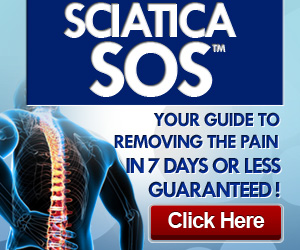Sciatica commonly refers to pain felt along the sciatic nerve’s length. The sciatic nerve is the longest single nerve of the body and branches from the lower back, through the hips and buttocks, and down each of the legs. Sciatica mostly results from compression of the sciatic nerve due to a herniated disc, narrowing of the spine, or having a bone spur on the spine. As a result, one experiences pain, tingling, inflammation, and sometimes numbness in the affected leg.
Spondylolisthesis is a lower back disorder that emanates from the displacement of a vertebra whereby the bone slides out of its usual and proper position onto that of another bone below it.
Mostly, the displacement occurs following a fracture or breakage.
Symptoms
- Pain in the lower back
- Thigh and buttocks pain
- A tingling or prickling sensation
- Numbness in the affected area
- Leg weakness
Common types of Spondylolisthesis
- Traumatic Spondylolisthesis – It results from the fracturing of the lamina, facet, or pedicle joints due to a direct trauma or vertebrae injury.
- Isthmic Spondylolisthesis – It results from reoccurring trauma and is commonly experienced by athletes that carry out hypertension motions.
- Dysplastic Spondylolisthesis – It results from a defect in a vertebrae part.
- Pathologic Spondylolisthesis – It is caused by a bone abnormality or defect like a tumor.
- Degenerative Spondylolisthesis – It occurs as a result of cartilage degeneration due to arthritic joint changes.
Treatment for Sciatica resulting from Spondylolisthesis
- Sciatica exercises – The exercises will encourage the pain felt on the foot or leg to move upwards to the lower back (centralization or localization). Sciatica pain on the lower back only relieves sciatic nerve compression that affects the lower extremity. With this, the pain does not extend to the leg and is not felt in the foot. Exercises such as pelvic tilts, knee lifts, and curl-ups can be performed as advised by a spine doctor.
- Medication – Administration of pain medications such as Tylenol or NSAIDs.
- Massage therapy – Deep tissue massage to reduce tension on the lower back.
- Hot and cold therapy on the pain areas.
- Transcutaneous Electrical Nerve Stimulation (TENS) for producing endorphins that are the natural body pain killers.
- Ultrasound – It reduces pain and stiffness by increasing blood circulation.
- Chiropractic care – It helps mobilize painful joint dysfunction to reduce pain.
- Injections – Epidural injections will improve radicular pain in the leg, while facet joint injections will work effectively on back pain. These are effective for pain associated with Degenerative or Isthmic Spondylolisthesis.
- Surgical treatment – Surgery can be considered whereby other forms of treatment fail. It is conducted to fuse the displaced vertebrae for a patient with excruciating pain that does not decrease with treatment, an extreme shift of a bone in the spine, or one with weakness in one or both legs. Surgery will realign the vertebrae and alleviate nerve pressure offering stability.
Conclusion
Sciatica is a lumbar radiculopathy symptom that Spondylolisthesis can cause. It results in excruciating radicular pain that travels and is experienced from the lower back and the buttocks into the legs or foot. The use of simple treatments can manage the condition. However, where the treatments completely fail, surgery may be considered.
Suggested articles:
– Sciatica – Symptoms, Causes, Treatment (Everything You Need To Know)
– Is Sciatic Pain Permanent? Acute Vs. Chronic Sciatica Explained
– How Do You Know When Sciatica Is Getting Better?
– 3 Stages Of Sciatica Recovery You Need To Know About
– Sciatica in Winter – Sciatica And Cold Weather
– How Do I Know I Have Sciatica? The Main Signs of Sciatica Explained
– Scoliosis And Sciatica – A Relationship Worth Some Attention
In Sciatica SOS™ , you’ll learn exactly how to relieve pain naturally and permanently
Sciatica SOS™ is a complete program for curing sciatica pain at home. It’s already helped many people overcome chronic sciatica quickly and easily – and it can do the same for you.
The program combines a simple exercise program with powerful home remedies that resolve the root causes of sciatica…reduce pain fast…and prevent it from returning.
Best of all, the program guarantees to relieve your pain in just 7 days.
Would it be a relief to be free from sciatica pain by this time next week?
To learn more about Sciatica SOS™, check out the following free video presentation: Sciatica SOS™

If you purchase Sciatica SOS™ today and your pain hasn’t been eliminated in just 7 days, you can claim a full, no-questions-asked refund (how many chiropractors offer that kind of guarantee?). Hundreds of former sciatica sufferers are already living a pain-free life thanks to these methods. So why not try it?
